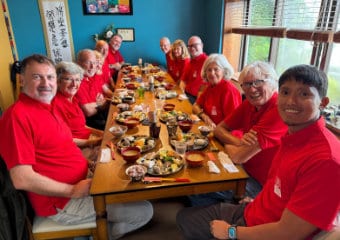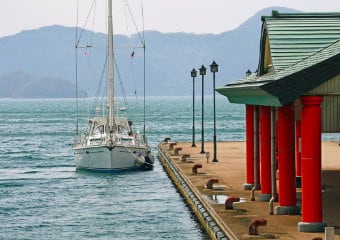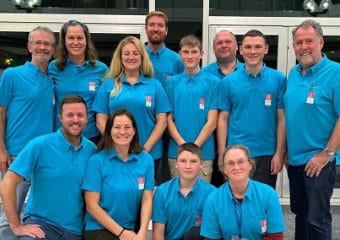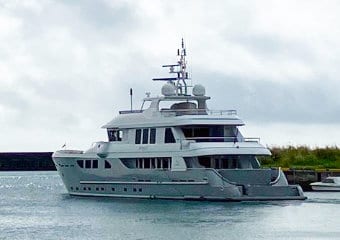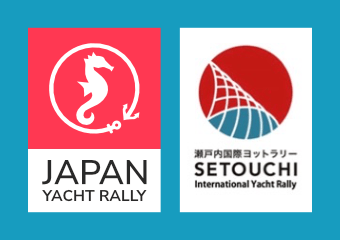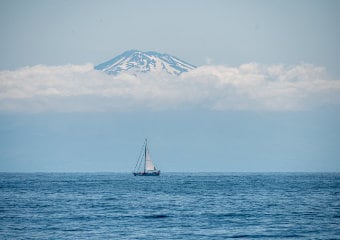Entering from the North: 3-Month and 15-Month Plans

Although most cruisers enter Japan from the south (Parts One and Two of this Japan Cruising Routes series) or the east (see Part 7), a few cruisers arrive in Japan from the Aleutian islands of Alaska in May-July, clearing in at Hokkaido's northernmost port of Wakkanai. From there, their routes are determined by how long they want to stay and where they want to go after Japan.
For those aiming for SE Asia and the South Pacific, they do the reverse of the Alaska-bound passage (Part One), heading south along the west coasts of Hokkaido, Honshu, and Kyushu, through the Ryukyu Islands to Okinawa, and then clearing out of Japan. They need to arrive in Japan early and do this passage very quickly in order to get below about 20°N (or, better, 15°N) before typhoons start arriving in June-July.
Because of the challenge of getting out of Japan before typhoon season, I recommend that boats arriving from the north follow a 15-month cruising plan. That takes them down the west coast of Hokkaido to Hakodate and then along the east coast of Honshu, past Tokyo, and into the Seto Inland Sea. At the end of three months, they make a quick visa run by plane or ferry to Korea (from Fukuoka is easiest) and then do another three months of cruising in the Seto Inland Sea, Shikoku, and Kyushu.
They leave their boat at a marina in the Seto Inland Sea or Kyushu for the winter and then, in the following spring, either head back to North America via the Sea of Japan or spend more time in western Japan before heading south via the Ryukyu Islands.
In addition to the places mentioned in other parts of this series, highlights of this north-to-south passage include the following.
Otaru
Having made the tough trip from Alaska, some boats may be in need of haul-out and repair services, and Otaru, located on the west coast of Hokkaido, has a first-rate marina to help them (conversely, it's the last marina for cruisers heading north). Hokkaido, having been made part of Japan only in the mid-19th century and developed with the help of foreign advisors, has a very different feel from the rest of the country, so, for those on the 15-month plan, Otaru is a great jumping-off point for some interesting inland exploration. The marina is walking distance to the train station, with trains going to Sapporo and, from there, to all parts of Hokkaido.
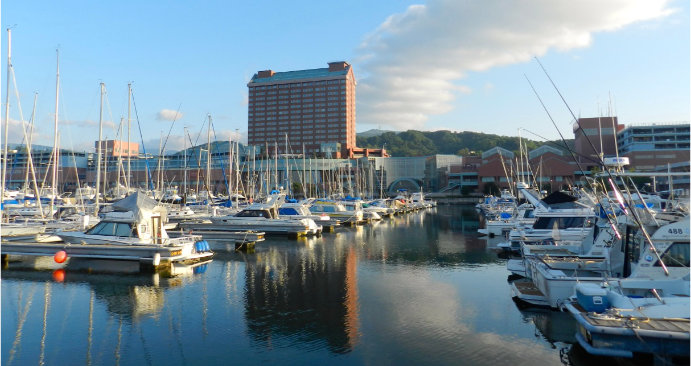
Kessenuma
The northeast coast of Honshu was devastated by the 2011 earthquake and tsunami, and the reconstruction of its ports is only now nearing completion. Kessenuma is a personal favourite - it is well protected from passing storms, the people are friendly and helpful, and the new port plan has dedicated space for visiting cruisers.
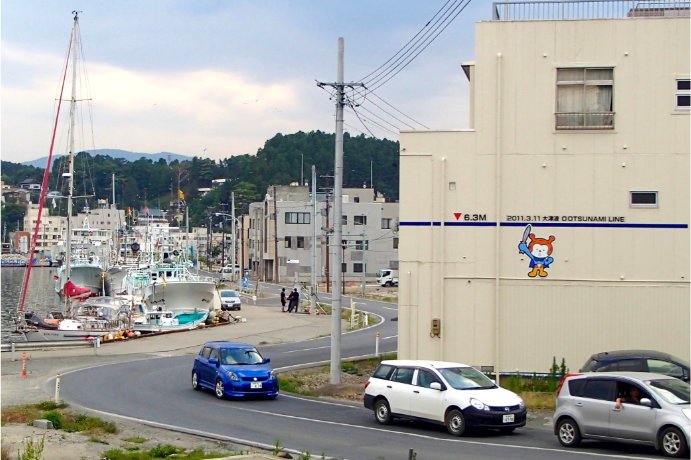
Yunotsu
On the Sea of Japan coast, a hidden gem is the small fishing port of Yonotsu, with (very hot) hotspring baths and traditional kagura dance performances every Saturday night at Tatsuno-Gozen Shrine. A longish taxi ride away is the Iwami Ginzan Silver Mine, which operated from the 16th to 20th centuries and was the largest silver mine in Japanese history. At its peak in the early 17th century, it attracted traders from around the world and was second only to Bolivia's Potosi mine in terms of both output and impact on global economics and politics. Well restored and with a fascinating museum and mine tour, it is a very informative and enjoyable one-day tour.
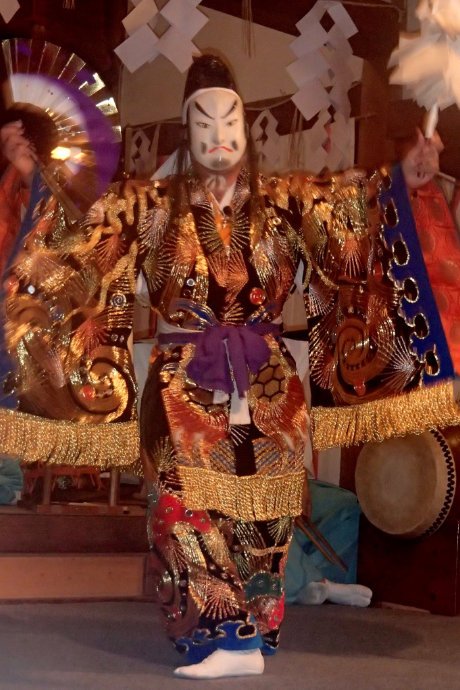
Hirado
Hirado, off the northwest coast of Kyushu, ranks as one my Top Three destinations in Japan. In the late 16th century, it is said that Hirado was one of the most international ports in the world, welcoming traders from Korea, China, Portugal, Holland, and England. It played a pivotal, although accidental, role in Japan deciding to isolate itself from the outside world. It's an interesting town to walk around, the museums are fascinating, the view from Hirado Castle is great, and the floating dock is free.
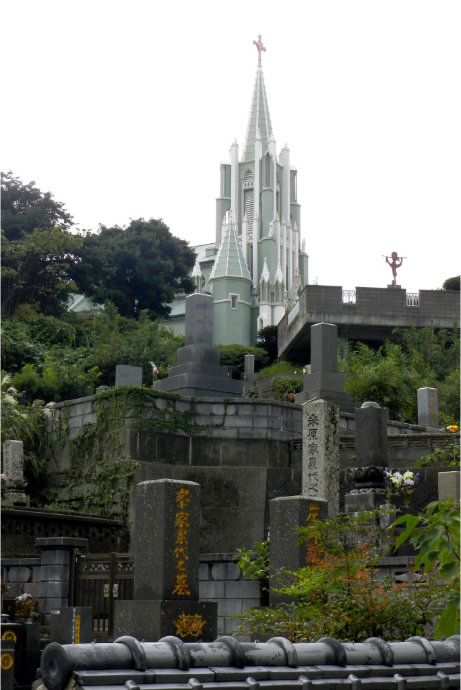
Japan Cruising Routes
To learn how Konpira Yacht Services can help you enjoy the wonders of Japan's oceans, please feel free to contact us for more information.
